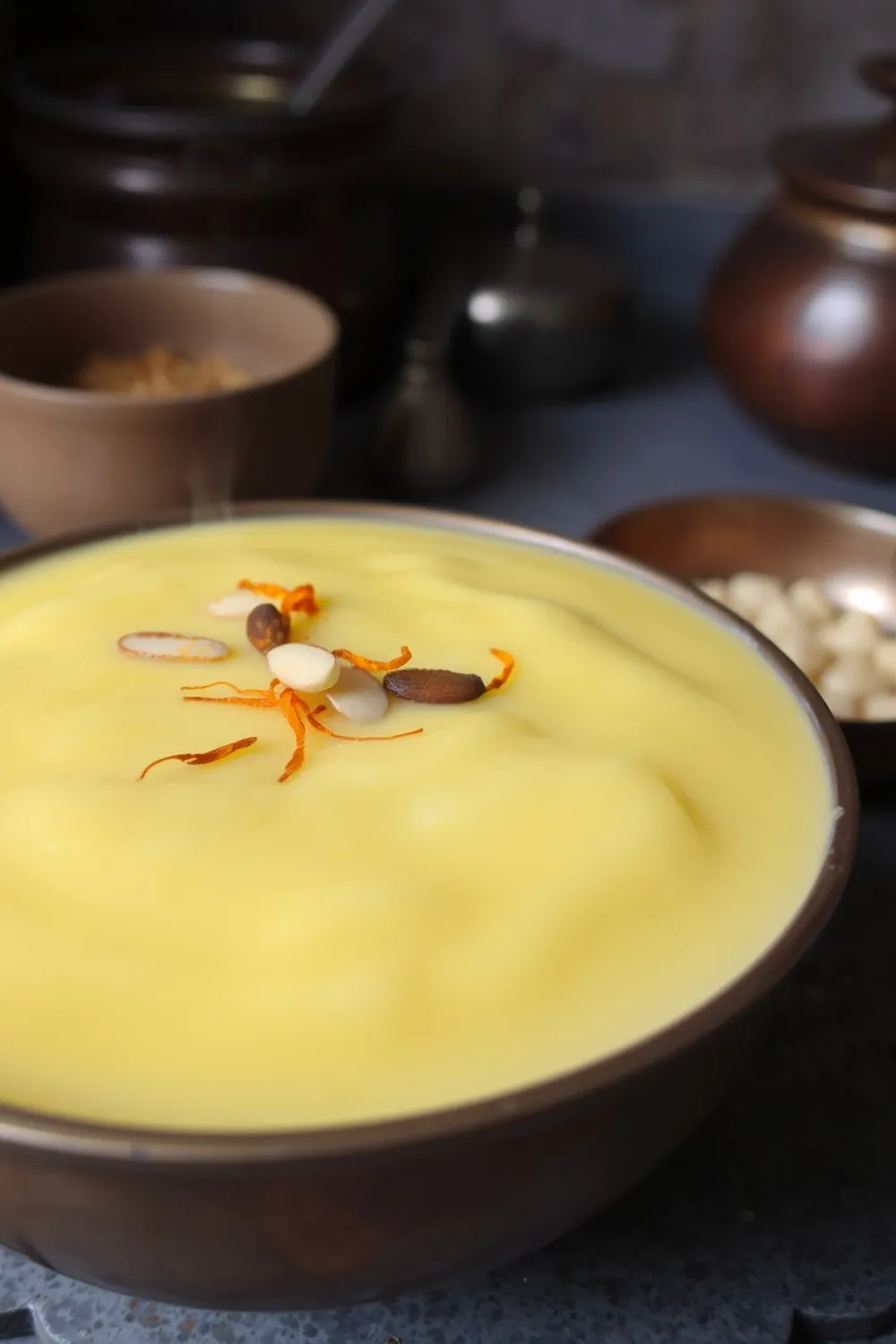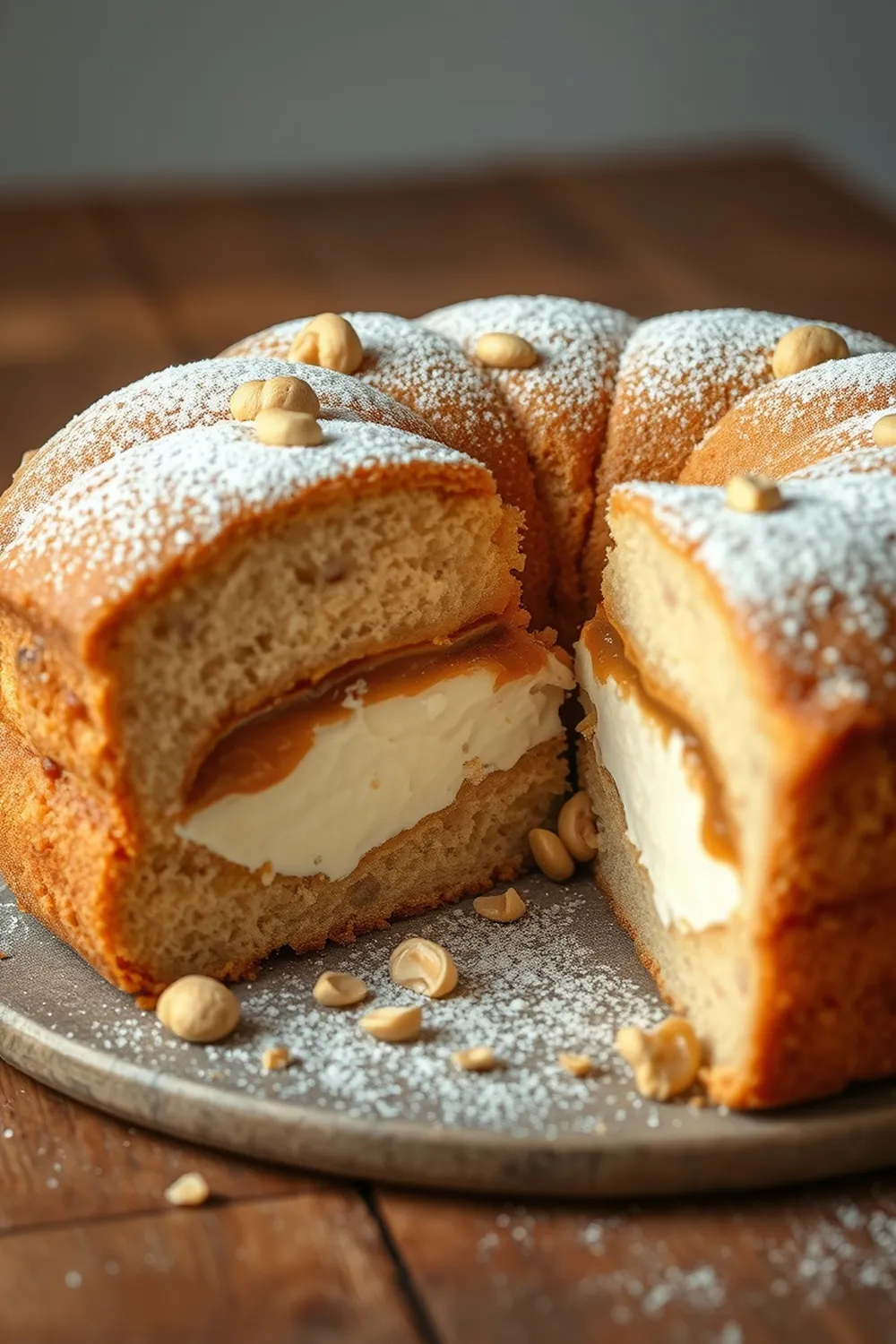- Rinse and dry basmati rice thoroughly.
- Heat ghee in a kadai, add the rice and fry for 1-2 minutes until lightly golden.
- Pour boiled full cream milk into the kadai and simmer on medium-low heat.
- Stir continuously for 20-25 minutes until the rice is very soft and the milk has reduced significantly.
- Add sugar and cardamom powder, stirring until the sugar dissolves completely.
- Simmer for another 5-10 minutes, stirring frequently, until the mixture thickens to your desired consistency.
- Garnish with saffron strands and serve hot or chilled.
- Calories:320 kcal25%
- Energy:1338 kJ22%
- Protein:8 g28%
- Carbohydrates:50 mg40%
- Sugar:30 mg8%
- Salt:80 g25%
- Fat:12 g20%
Last Updated on 4 months by Neha Deshmukh
Basmati Rice Kheer Recipe – Traditional Indian Rice Pudding with Saffron & Cardamom
Okay, let’s be real. Is there anything more comforting than a warm bowl of kheer? This Basmati Rice Kheer is the dessert I grew up with, and honestly, it still feels like a hug in a bowl. It’s creamy, fragrant, and just… perfect. I’m so excited to share my family’s recipe with you!
Why You’ll Love This Recipe
This isn’t just any rice pudding. We’re using basmati rice, which gives it a lovely, slightly nutty flavour and a beautiful texture. Plus, the saffron and cardamom? They take it to a whole other level. It’s surprisingly easy to make, and the result is a truly special dessert that’s perfect for celebrations or just a cozy night in.
Ingredients
Here’s what you’ll need to make this dreamy kheer:
- 2 cups full cream milk (approximately 475ml)
- 1 tablespoon basmati rice (approximately 15g)
- ¼ cup sugar (approximately 50g)
- 1 teaspoon ghee (approximately 5ml)
- ⅛ teaspoon cardamom powder (approximately 0.5g)
- Few strands saffron
Ingredient Notes
Let’s talk ingredients! Getting good quality stuff really makes a difference here.
- Basmati Rice: I always use aged basmati rice. It’s longer-grained and less likely to get mushy. You can find it at most Indian grocery stores.
- Full Cream Milk: Don’t skimp on the milk! Full cream milk gives the kheer its richness and creamy texture. You can use other types of milk, but the result won’t be quite as decadent.
- Ghee: Ghee adds a beautiful nutty flavour that’s essential to traditional kheer. If you don’t have ghee, you can use unsalted butter, but ghee is really the way to go.
- Cardamom: Freshly ground cardamom is best! The aroma is incredible. A little goes a long way, so don’t overdo it.
- Saffron: Saffron is the star of the show! It adds a beautiful colour and a subtle, floral flavour. A little is expensive, but it’s worth it for that authentic kheer experience. Make sure you’re getting good quality saffron – it should be a deep red colour.
Step-By-Step Instructions
Alright, let’s get cooking!
- First, rinse and dry 1 tablespoon of basmati rice really well. Then, grind it into a coarse mixture – not a fine powder, just broken down a bit.
- Heat 1 teaspoon of ghee in a kadai (a deep, round-bottomed pan) over medium heat. Add the ground rice and fry for about a minute, stirring constantly. This toasting step is important – it adds a lovely flavour.
- Now, pour in the 2 cups of full cream milk. Bring the mixture to a simmer, then reduce the heat to low.
- This is where the patience comes in! Stir continuously for 15-20 minutes. Seriously, don’t walk away! The rice needs to soften and the milk needs to reduce. It will thicken as it goes.
- Once the rice is soft and the milk has reduced a bit, add ¼ cup of sugar and ⅛ teaspoon of cardamom powder. Stir until the sugar dissolves completely.
- Continue to simmer for another 5 minutes, stirring occasionally, until the kheer reaches your desired consistency. It will thicken more as it cools.
- Finally, garnish with a few strands of saffron. Serve hot or chilled – it’s delicious either way!
Expert Tips
- Sticking Prevention: The biggest challenge with kheer is preventing it from sticking to the bottom of the kadai. Constant stirring is key! Using a heavy-bottomed kadai also helps.
- Rice Texture: If you prefer a smoother kheer, you can grind the rice a little finer.
- Milk Choice: While full cream milk is traditional, you can experiment with other types. Just be aware that it will affect the richness and texture.
Variations
Kheer is super versatile! Here are a few ways to customize it:
- Vegan Adaptation: My friend Priya makes an amazing vegan kheer using almond milk and a little coconut cream for extra richness. She swaps the ghee for vegan butter. It’s surprisingly good!
- Gluten-Free: Good news! This recipe is naturally gluten-free.
- Spice Level: If you love cardamom, feel free to add a little more. My grandma always added a tiny pinch of nutmeg too.
- Festival Adaptations: Kheer is a staple at Indian festivals. For Diwali, I like to add chopped nuts like almonds and pistachios. During Holi, a touch of rosewater is lovely.
Serving Suggestions
Kheer is wonderful on its own, but it’s also great with:
- A sprinkle of chopped nuts (almonds, pistachios, cashews)
- A few extra saffron strands
- A side of fruit (mangoes are amazing!)
Storage Instructions
Leftover kheer can be stored in an airtight container in the refrigerator for up to 3 days. It will thicken as it cools, so you might need to add a splash of milk when reheating.
FAQs
Let’s answer some common questions:
- What type of rice is best for Kheer? Basmati rice is the traditional choice, but you can also use short-grain rice. Just be mindful of the cooking time.
- Can I make Kheer ahead of time? Yes! Kheer actually tastes better the next day after the flavours have had a chance to meld.
- How do I prevent the Kheer from sticking to the bottom of the kadai? Constant stirring is the most important thing. A heavy-bottomed kadai also helps.
- What is the significance of saffron in Kheer? Saffron is considered a sacred spice in India and is often used in festive dishes. It adds a beautiful colour, flavour, and aroma to kheer.
- Can I use a different type of milk for this recipe? You can! Almond milk, oat milk, or even evaporated milk will work, but the texture and flavour will be different.
Enjoy making this delicious kheer! I hope it brings you as much joy as it brings my family. Let me know how it turns out in the comments below!










